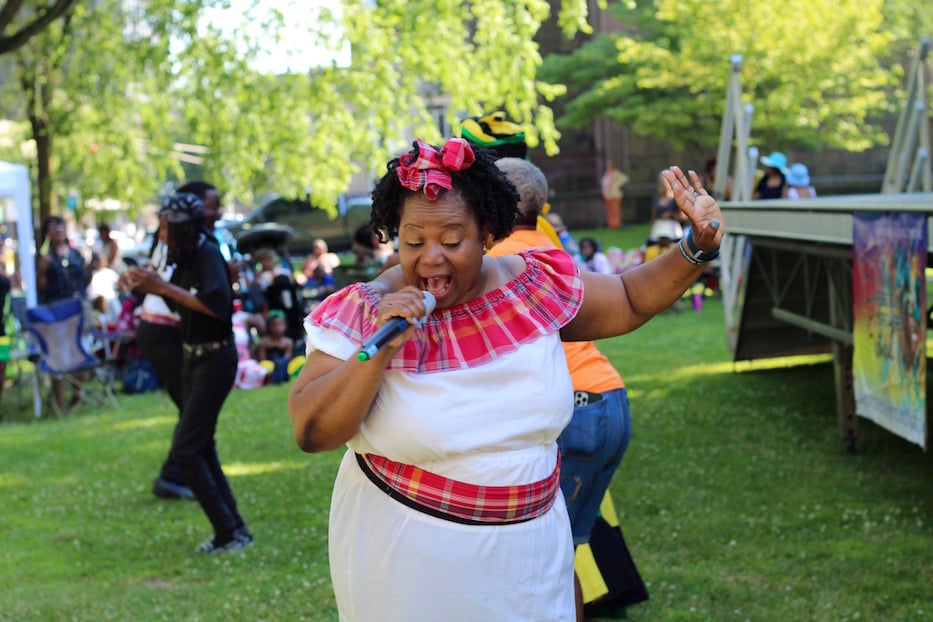
Culture & Community | Economic Development | Arts & Culture | Arts & Anti-racism
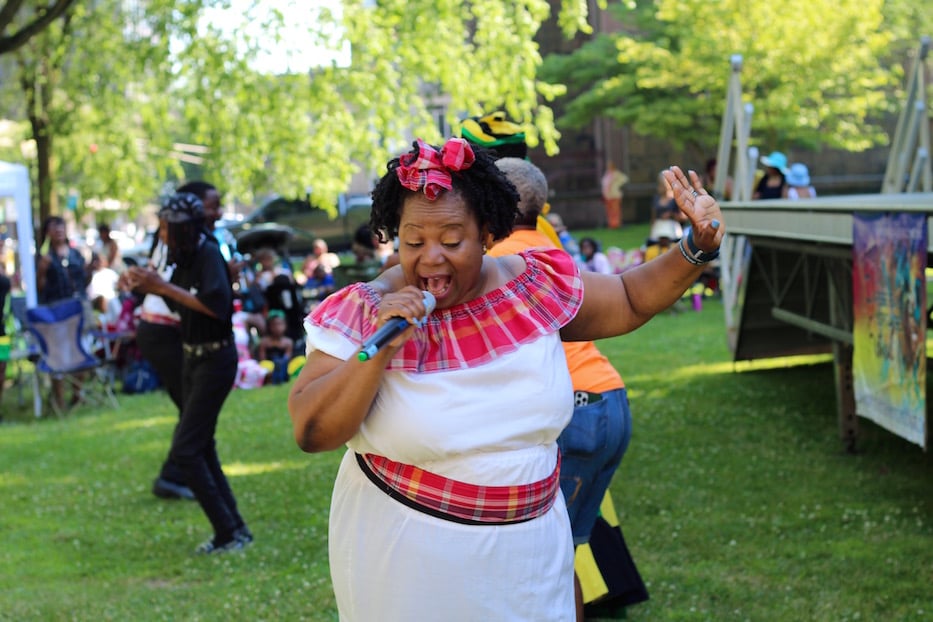
A performer from the Braata Folk Singers at the 2022 Caribbean Heritage Fest. Lucy Gellman File Photo.
Maybe it was a performance at the Shubert Theatre that included dinner downtown, or a nightcap at the Anchor Spa. Maybe it was a summer neighborhood festival, at which a small food business and up-and-coming musician were the unexpected stars of the show. Or a late-night jazz show that took audiences by surprise, and sparked extra trips to the hometown record store.
By the end of last year, arts and culture made up a nearly $1 billion industry in Connecticut, bringing $161,420,087 into the Greater New Haven Region alone. In New Haven, often championed as the state's cultural capital, that number was $143,430,069. Now, arts advocates, nonprofit leaders and staff at performing arts and cultural venues across the state are heralding that data as they use it to advocate for more public and private dollars to help them do what they do.
That data comes from Americans for the Arts, which last week released its most recent Arts and Economic Prosperity (AEP) study through its website, a flurry of infographics, and a 90-minute virtual launch. In 52 pages of data, the study tells the story of a sector still coming back from the Covid-19 pandemic, in which cultural events are helping to boost small businesses, grow jobs, and support local and state economies.
Nationally, the sector generated a total of $151.7 billion (about half of that was spending directly by organizations; the other half was spending by audiences) and 2.6 million jobs. In total, 373 state and local partners submitted data.
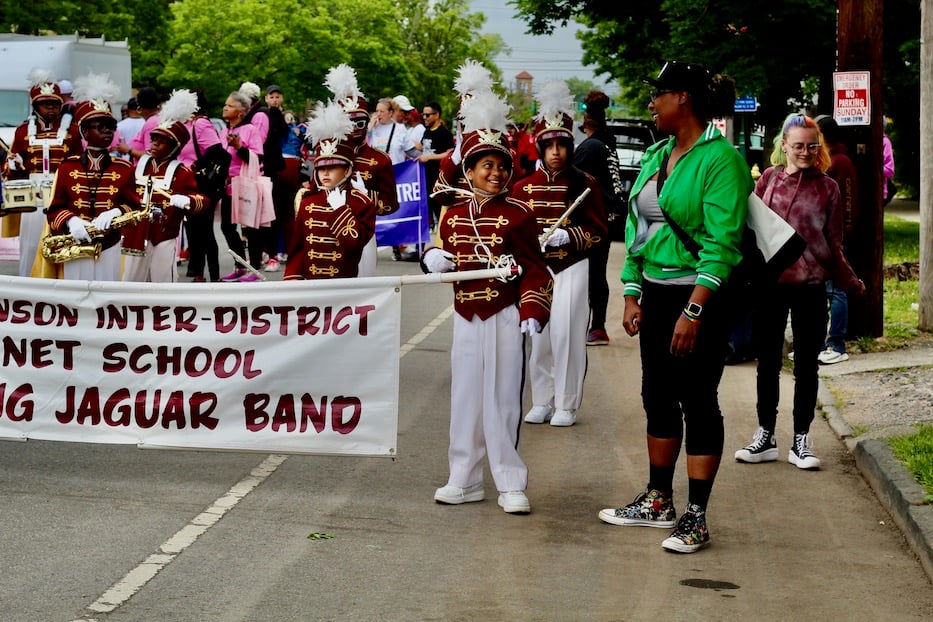
Performers at the Elm City Freddy Fixer Parade, one of this year's partners on the study. Lucy Gellman File Photo.
"It is crucial for us to tell our stories about the impact of the arts within our communities," said Nolen Bivens, president of Americans for the Arts, at a virtual launch event last week. "The arts should be thought of as a national asset, supported, cultivated and nurtured as such.
"The release of the Arts and Economic Prosperity 6 Study, the largest of its kind, provides the strong case making tools we need to generate more private and public investment in the arts and drive more strategic policies at the national, state and local levels. The key is now to use this data to that end."
In Connecticut, where partners range from the Elm City Freddy Fixer Parade to Neighborhood Housing Services of Waterbury to the Coventry Arts Guild, there's plenty to unpack. Last year, arts and culture together generated $954.1 million, $606.1 million of which was spent directly by arts and culture organizations. The remaining $348 million came through "event-related expenditures," like dinner, drinks and childcare that might accompany a night at the theater or concert. In the state, the sector also created and sustained 16,667 jobs and generated nearly $274 million in tax revenue.
In Greater New Haven, the sector generated $161.4 million, $143 million of which came directly from the Elm City. In terms of job growth, that translates to 3,086 jobs, and $42 million in tax revenue.
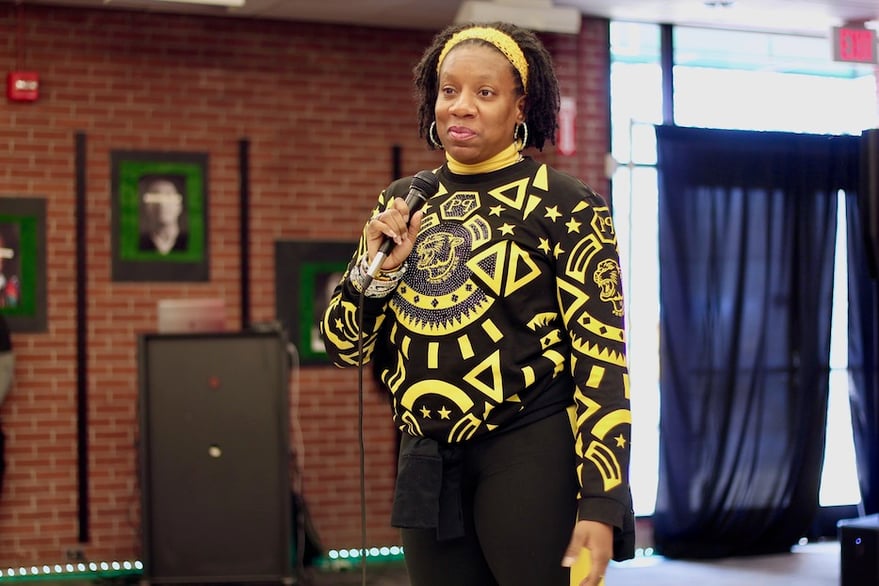
Artsucation Academy Network founder Hanan Hameen at "Stetson Stories," an initiative of Black Haven that unfolded earlier this year. Lucy Gellman File Photo.
For a lifelong New Havener like Salwa Abdussabur, who founded Black Haven in 2020 and has since grown the film festival to support creatives in film and media across the state, that news speaks to “arts and cultural renaissance” that is actively happening in the city. She praised Cultural Affairs Director Adriane Jefferson, who last year introduced the city’s Cultural Equity Plan and has worked to bridge arts and culture and economic development since starting her role in February 2020.
While the study focuses on economic growth, Abdussabur also pointed to the role that the arts can play in one’s professional and social and emotional development. In high school, “I found my voice” through poetry and spoken word, she remembered in a phone call Friday morning. As she became a writing mentor with The Word, she learned that it was a path to not only getting paid as a teaching artist, but also to building an administrative skill set that she still uses today.
While she’s thrilled to hear the study’s results, she added, she sees them as a starting place. As the founder of a film festival and nonprofit focused on Black creatives, she’s witnessed firsthand how often artists of color are exploited, underpaid, and asked to work for little to no compensation.
“Now that I know we’re bringing in a billion dollars [to the state],” she wants to see greater economic opportunity for artists, particularly those who have historically been pushed to the margins. For her, she said, that vision ranges from affordable kitchen space to media outlets invested in more diverse narratives to venues that more readily open their doors to Black and Brown producers who need a spot to present their work.
“I think we need to continue to nurture and keep that space for new leaders to rise,” she said. “Because they're rising. We need policy change, more accommodation for artists and for business owners, and we need to talk about a cultural equity plan for our state.”
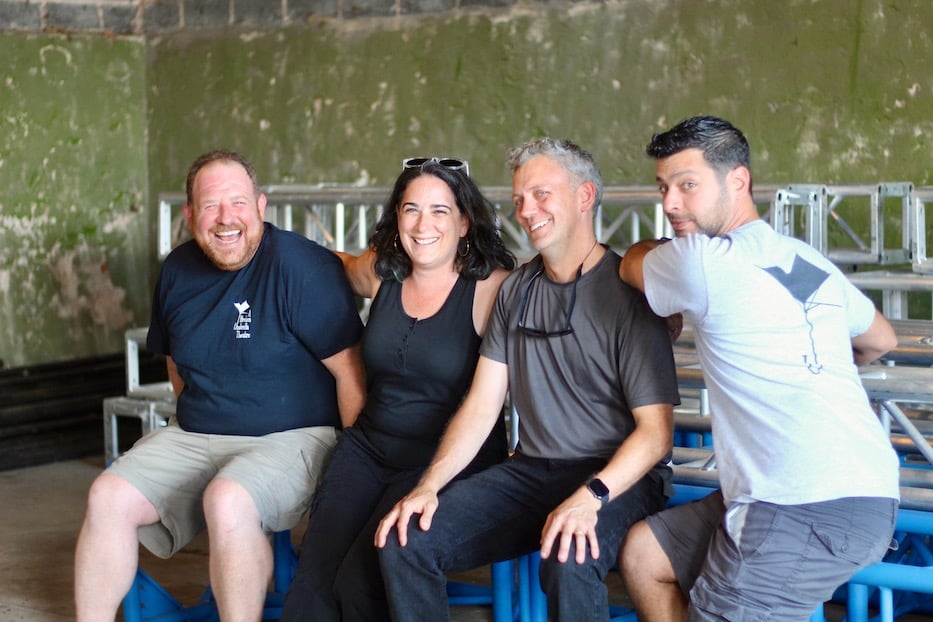
Ian Alderman, Rachel Alderman, Ryan Gardiner, and Ruben Ortiz of A Broken Umbrella Theatre Co. Lucy Gellman File Photo.
Reached by phone Friday morning, A Broken Umbrella Theatre Company Artistic Director Ruben Ortiz added that he sees the study’s results as not just an economic boon, but an affirmation that the arts enhance and expand one's quality of life. Years ago, it was New Haven’s vibrant arts scene that brought him to Connecticut, where he runs a theater company and works as an actor. It’s the arts that are keeping him here as he and his wife raise a family in the city’s Westville neighborhood, where A Broken Umbrella recently bought its first brick-and-mortar performance space.
“It cultivates culture and it enlightens minds and lifts your spirits,” he said, pointing especially to the return of live performance. “People go to the theater for all kinds of reasons. There are things that make you think critically, there are things that make you feel good.”
He added that the data speaks directly to the need to support, grow, and maintain cultural ecosystems in communities. When A Broken Umbrella has a performance, he encourages people to check out Westville neighborhood restaurants like Delaney’s and Camacho Garage, which keep more dollars circulating in New Haven. “If those businesses don’t thrive, we don’t thrive,” he said.
The study also shows, perhaps not surprisingly, that the need for a healthy ecosystem trickles down to individual artists. Kwadwo Adae, who runs a painting studio and art school on State Street in New Haven, pointed to the razor-thin margins at which working and teaching artists are often living. For eight years, he’s kept the price of his painting classes under $40 to keep them as accessible as possible.
What that translates to, he said in a phone call Friday, is just enough to make rent with the extra income he brings in from mural commissions and public art projects. When he hears that the sector brought $143 million into the city last year alone, “that data really just kind of screams how important it is to support the arts,” he said. “That's a pretty staggering number for a relatively small city.”
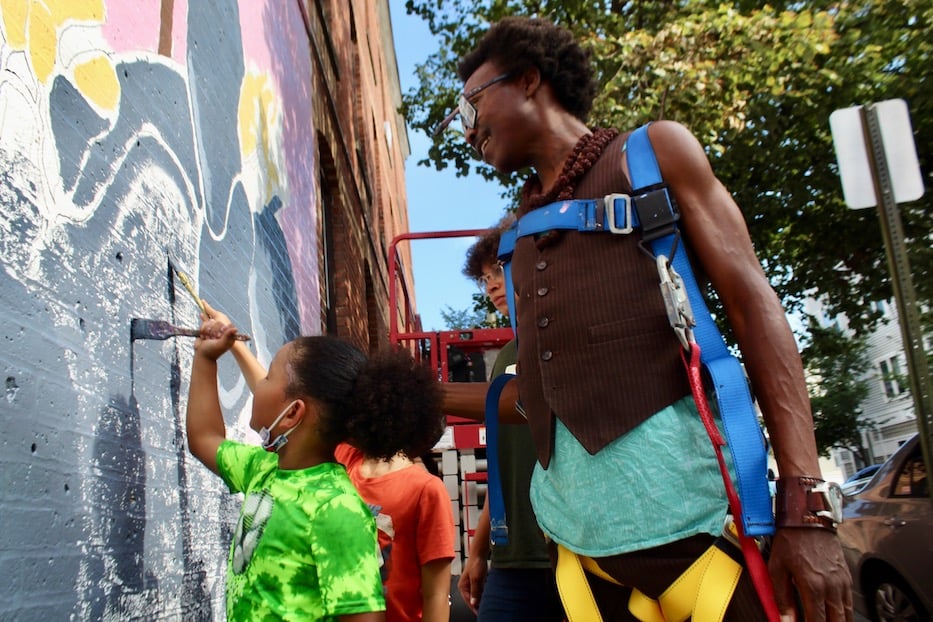
Artist Kwadwo Adae at the 2022 mural project in New Haven's Hill neighborhood. Lucy Gellman File Photo.
“This shows us that the arts need to be taken more seriously as a viable option, and not as something that's an afterthought for funding,” he said, noting how arts programming is often the first thing to get cut in educational, municipal, and state budgets. “There seems to be a disconnect between how vital these artistic activities are for people’s daily lives” and how worthy they are of funding.
“It’s really up to the local community to make sure that people are being nourished,” he added. “That allows artists to be the most powerful that they can be.”
The results of the study—collected at arts festivals, awards shows, live performances, parades, and events across the region—also highlight a sector that has not fully bounced back from the Covid-19 pandemic. When Covid hit Connecticut in March 2020, it resulted in thousands of layoffs across the sector, from theaters that were suddenly dark to music venues and symphony orchestras that went eerily quiet overnight. Some of those jobs never came back; others held on, but without salary increases that adequately reflect the cost of living or reality of inflation.
When places began to reopen in 2021 and 2022, institutions were navigating a world turned upside down. Since, and as federal relief has begun to dry up, they've worked to figure out how to keep their doors open in a totally new normal. Audiences still haven't returned to pre-pandemic levels, causing some venues to reevaluate their entire models. Some have also struggled to adapt to a world in which historically entrenched, white-led institutions must change, or be rendered obsolete.
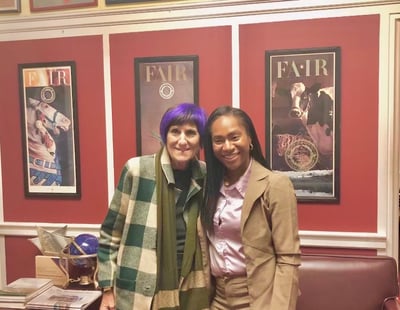 And yet, the data shows a trend towards, and not away from, greater economic health. This Monday and Tuesday, those findings received a warm welcome on Capitol Hill, as a "fly-in" delegation of 14 arts advocates from across the country arrived to dive deep on the data and use the study to advocate for increased federal funding and support for the arts. Among them, New Haven Cultural Affairs Director Adriane Jefferson said she was excited to tell the story of the impact of the arts in and on New Haven—and to have the data to back it up.
And yet, the data shows a trend towards, and not away from, greater economic health. This Monday and Tuesday, those findings received a warm welcome on Capitol Hill, as a "fly-in" delegation of 14 arts advocates from across the country arrived to dive deep on the data and use the study to advocate for increased federal funding and support for the arts. Among them, New Haven Cultural Affairs Director Adriane Jefferson said she was excited to tell the story of the impact of the arts in and on New Haven—and to have the data to back it up.
"This has been absolutely incredible," she said Tuesday morning, shouting out new arts allies from Maine, Washington, Texas, Wisconsin, Florida, Rhode Island, California, Michigan and Delaware who she met along the way. "The information is so empowering—to really know how much we are contributing to the economy."
She added that she is especially excited about some of the new methodologies that AEP 6 employed this year. For the first time in the study's 30-year history, Americans for the Arts reached out intentionally to BIPOC (Black, Indigenous, People of Color) and ALAANA (African, Latine, Asian, Arab, Native American) identifying communities, in the hopes of gathering data that has not historically included audiences and consumers of color.
What the study found—busting through entrenched, harmful, and decades-old myths that have plagued the sector—is that people in communities of color spend "nearly identical to the overall national average" on arts and culture. For Jefferson, who has championed cultural equity in the city since arriving in 2020, it was a validation of what she's always known. She didn't need a study to prove the value of the Black dollar, she said—but having the numbers will help her as she works to secure more funding and program events in the city.
"It arms us to do what we need to move the needle forward," she said.
Learn more about AEP6 here. The final photo in the article is courtesy of Adriane Jefferson.

